#Henry Clay Frick
Text
Henry Clay Frick
Henry Clay Frick: The Industrialist, Art Collector, and a Controversial Figure
Henry Clay Frick, born on December 19, 1849, was a prominent figure in American industrial history, known for his role as an industrialist, financier, and art collector. His life was marked by remarkable achievements, but also marred by controversies and conflicts with labor unions. This article delves into the…

View On WordPress
#Bio Of Henry Clay Frick#henry clay frick#Henry Clay Frick Accomplishments#Henry Clay Frick Achievements#Henry Clay Frick And The Homestead Strike#Henry Clay Frick Estate#Henry Clay Frick Importance#Henry Clay Frick Industry#Henry Clay Frick Shot#Henry Clay Frick Steel#Henry Clay Frick Timeline#Henry Clay Frick Us Steel#Henry Clay Information#Legacy Of Henry Clay Frick#What Was Henry Frick Known For
0 notes
Text
The Magnolia Palace by #FionaDavis #HistoricalFiction #BookReview #GildedAge #2022Books #FrickCollection
I love historical fiction that has dual timelines, and #TheMagnolaPalace by #FionaDavis has two timelines: 1920 and 1966, both settled on the house of steel magnate Henry Clay Frick. #HistoricalFiction #BookReview #AudiobookReview #FrickCollection
Eight months since losing her mother in the Spanish flu outbreak of 1919, twenty-one-year-old Lillian Carter’s life has completely fallen apart. For the past six years, under the moniker Angelica, Lillian was one of the most sought-after artists’ models in New York City, with statues based on her figure gracing landmarks from the Plaza Hotel to the Brooklyn Bridge. But with her mother gone, a…

View On WordPress
#Fiona Davis#Frick Collection#Frick Museum#Gilded Age#Henry Clay Frick#Historical Fiction#January 2022#New York City#Spanish Flu#The Magnolia Palace
1 note
·
View note
Text
every rage against the machine song
[guitar riff that incites bloodthirst]
THROW A BRICK AT A COP [fills derived from riff]
THROW A BRICK AT A COP
THROW A BRICK, THROW A BRICK, THROW IT
THROW A BRICK AT A COP
GO OUTSIDE AFTER THIS CONCERT AND
THROW A BRICK AT A COP
[guitar riff]
[stripped down rhythmic part]
Throw it, throw it, throw a brick
Throw it, throw it [x2]
[rap part]
parabolic motion of a ceramic block
impact to the skull and it makes a body drop
slap chop coppers with a steel file knife
life flight fellows down the thin blue line, AAAAUUUGGHH
THROW IT, THROW IT
[riff but more atonal and with weird electronic noises on top]
THROW A BRICK AT A COP, THROW IT
THROW A BRICK AT A COP, YEAH THROW IT
COP ON THE STREET RIGHT AFTER THIS CONCERT YEAH
THROW A BRICK AT THAT COP
[spoken] here's a bunch of bricks we brought, everybody take a free brick for later! UNH!
[funk dance break]
[quiet part]
masonry unit
blue reign of terror
construction material
for the new era
aaaahhh, masonry unit
blue reign of terror
construction material
FOR THE NEW ERA, AAAAUUUUGGGHHH
[riff now fully polyphonic with vocals]
THROW A BRICK AT A COP
THROW A BRICK AT A COP
GO OUTSIDE AFTER THIS CONCERT AND
THROW A BRICK AT A COP
yeah!
#rage against the machine#ratm#zach de la rocha#i'm honestly not all that familiar with ratm someone please tell me what album this is from#music#adrenaline-inducing music#song parody#shitpost#punk#marsha p johnson tribute post#the only piece of leftist revolutionary history i could think of was alexander berkman's attempted assassination of henry clay frick#which doesn't seem topical enough#sorry#posts that are only suggestions in minecraft#please mr fbi man don't investigate me i only wrote this for the memes
10 notes
·
View notes
Text
my union is bargaining rn and it is honestly so wild to observe in action how the ostensibly well-meaning social justice libs of management start radiating Henry Clay Frick particles when they're at the bargaining table
22 notes
·
View notes
Text

Happy birthday, Alexander Berkman! (November 21, 1870)
An influential anarchist thinker and activist, Alexander Berkman was born in what is now Vilnius to a well-off Jewish family. From a young age, he found himself drawn to radical thoughts and ideas which were growing in the Russian Empire, and devoured revolutionary literature. At the age of 18, he moved to New York City, where he fell in with anarchist circles and formed a lifelong relationship with fellow anarchist Emma Goldman. In 1892, amidst the Homestead Strike, Berkman attempted to assassinate factory manager Henry Clay Frick, but failed, and spent 14 years in prison as a consequence. He wrote his memoirs while in prison, and continued to write after his release, until he and Goldman were deported to Russia for their opposition to American involvement in World War I. Initially supportive of the Bolshevik Revolution, their attitude soon soured, and they left Russia for France, where, in ill health, Berkman took his own life in 1936.
50 notes
·
View notes
Text
Today in labor history, July 6, is the anniversary of the Battle of Homestead which happened in 1892 near Pittsburgh, PA. Here's a summary of a lecture I watched about it.
The Steelworkers Union went on strike against Carnegie Steel who, under leadership of Henry Clay Frick, wanted to double hours and half wages. The mill shut down July 1 and the workers had the support of more or less the whole town. The conflict came to a head in the early hours of the morning on July 6, when the hired Pinkerton detective mercenaries tried to make a river landing and force the Homestead mill to open. Historians don't know who fired the first shot, but the workers and townspeople were able to successfully prevent the Pinkertons from taking the town and reopening the mill after several deaths and injuries. The mercenaries were run out of town to the rail station and forced to leave.
Unfortunately, they won the battle but not the war. Soon after, the US National Guard was called in and reopened the mill. Most of the striking workers were fired, the steel and iron union was dissolved, and the company got what they wanted: half pay and double hours. Later on in the early 1900s, a few steel companies were bought together and merged to create the first billion dollar company in the US. The steelworkers Union didn't recover until the 1930s.
So anyway, here's a great holiday for July! Celebrate the spirit of sticking it to the man, support labor issues, and live your life in a way that Andrew Carnegie would hate you
32 notes
·
View notes
Text
so there's a post on this tag saying richard clay may be a reference to henry clay fricks i can't stop thinking about his and george dynamic, it's almost if george is his andrew carneige. a cold hearted man and "sensible" one doing business together. now, i know george is mostly inspired by jay gould, but if his relationship with clay is resembling carnegie and fricks i only wonder if it could mean george is going to become a philantropist like andrew. and wouldn't that be funny if it was the case? cuz bertha is suppose to become a sufragist like alva vanderbilt. ruthless capitalists ending their life as activists...actually is so silly that i can picture jkf writing about it.
#the gilded age#george russell#richard clay#bertha russell#does this post make any sense?#i don't know and i'm sorry#this is mostly a crack post#but deep down i think a lot about this concept#and of course this a george x bertha post#george x bertha
14 notes
·
View notes
Text
Good morning, guess who only just put together that Richard Clay’s name is a laughably direct echo of Henry Clay Frick’s
#feel free to point and laugh#right-hand man who is more brutal and uncompromising than his boss#of course. of course.#richard clay#george russell#the gilded age
7 notes
·
View notes
Text
“Todas las guerras son guerras entre ladrones demasiado cobardes para luchar, que inducen a los jóvenes varones de todo el mundo a hacer la lucha por ellos”
Emma Goldman
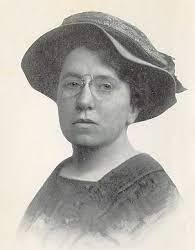
Fue una anarquista y escritora lituana nacida en Kaunas (antes imperio ruso) en junio de 1869, fue apodada “la mujer mas peligrosa de Estados Unidos”, debido a sus ideas revolucionarias por su pensamiento tanto feminista como anarquista.
Sus padres eran judíos ortodoxos, cuya madre ya tenía dos hijos de un matrimonio anterior y posteriormente 4 hijos mas de un matrimonio arreglado. Emma fue la primera hija de esos 4.
Ya casados los padres de Emma, invirtieron la herencia familiar en la creación de un pequeño hotel que rápidamente fracasó.
Derivado de la situación tan delicada que imperaba en esos tiempos para los judíos, especialmente tras la muerte del Zar Alejandro II, la familia se mudó a San Petersburgo y a la edad de 16 años Emma y su hermana huyeron a los Estados Unidos, en donde se casa con un emigrante ruso mismo que dejaría 10 meses después conservando la ciudadanía estadounidense.
Emma conoce a Alexander Berkman, un pilar fundamental del movimiento anarquista estadounidense, por lo que Emma a la edad de 20 años ya era una activista del anarquismo y una entusiasta revolucionaria.
Berkman la inspiró para desarrollar su papel de propagandista, oradora y escritora, redactando libros, revistas y periódicos, con una activa participación en huelgas, mitines y protestas, así como la participación en un intento de asesinar al empresario Henry Clay Frick en 1893.
Sus ideas libertarias iban desde la libertad sexual, difusión y uso de preservativos y divulgación de ideas feministas y anarquistas, razón por la cual llegó a estar en prisión en varias ocasiones.
Goldman fue acusada en 1893 de agitadora y volvió a prisión por oponerse al servicio militar obligatorio en donde estuvo prisionera en la isla de Blackwell.
En 1901 se le involucra en un complot para asesinar al presidente William McKinley y en 1916 nuevamente es detenida y encarcelada por la distribución de un manifiesto en favor de la anticoncepción.
Goldman es encarcelada por cuarta vez, en 1917 junto con Alexander Berkman por conspirar contra la ley que obligaba al servicio militar, haciendo publicas su rechazo a la primera guerra mundial al que consideraba un acto del imperialismo, y dos años después fue deportada a Rusia pues se le llegó a considerar por el presidente Hoover como una de las mujeres mas peligrosas de América.
Entre 1920 y 1922 residió en la Union Soviética y participó en la sublevación anarquista de Kronstadt, apoyando a los bolcheviques que posteriormente fueron reprimidos y asignados a trabajos forzados durante la revolución de octubre. Razón por la cual Goldman debe cambiar de bando de donde datan sus escritos “Mi desilusión con Rusia” y “Mi posterior desilusión con Rusia” marchándose a vivir a Canadá.
Emma Goldman fallece en mayo de 1940 en Toronto Canadá víctima de un segundo ataque vascular cerebral a la edad de 70 años.
Fuente: Wikipedia.
#emma goldman#feminismo#anarquismo#anarquista#socialism#citas de escritores#escritores#anarchism#activismo#rusia#frases de escritores
13 notes
·
View notes
Photo

Henry Clay and Helen Frick by Edmund Tarbell, c. 1910, via National Portrait Gallery, Washington D.C.
17 notes
·
View notes
Text
The Frick Pittsburgh
The Frick Pittsburgh: A Historical and Cultural Oasis
The Frick Pittsburgh is more than just a museum. This cultural and historical complex serves as a testament to the life and times of the illustrious industrialist and art aficionado, Henry Clay Frick. Nestled in the residential East End of Pittsburgh, the Frick complex spans almost six acres of verdant lawns and beautiful gardens, offering an…
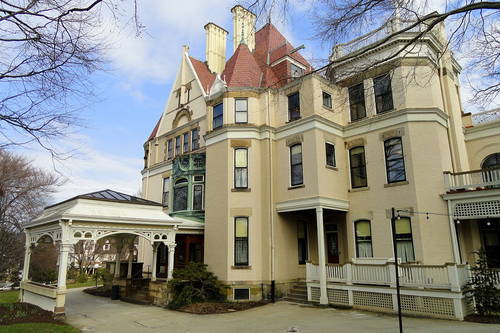
View On WordPress
#Frick Pittsburgh Hours#The Frick In Pittsburgh#The Frick Pittsburgh#The Frick Pittsburgh Cafe#The Frick Pittsburgh Careers#The Frick Pittsburgh Directory#The Frick Pittsburgh Employment#The Frick Pittsburgh Events#The Frick Pittsburgh Gift Shop#The Frick Pittsburgh Photos#The Frick Pittsburgh Tickets#The Frick Pittsburgh Tours#The Frick Pittsburgh Winterfest#What Is The Frick Pittsburgh
2 notes
·
View notes
Note
Listen I know you're an advocate for communism but what's your opinion on Carnegie? Doing the research he was an astonishingly good person
Ehhhh, not really. While yes he did write the Gospel of Wealth, in which he encouraged wealthy capitalists to use their money philanthropically, the problem is that this attitude does nothing to address the structural inequalities that give rise to such disparities of wealth in the first place. Not to mention that this is an entirely undemocratic way of redistributing wealth, and often does more to aid the capitalist than it does to help the commoners. After all, pouring money into education is fantastic when you want to raise workers who will make you more money. Or if you want to cover up a scandal, like he did with the Jamestown flood.
Not to mention his role in the Homestead Strike, which was disastrous for steel workers wages, and ended in a bloody conflict when Henry Clay Frick, who Carnegie had assigned to break up the strike, sent in the Pinkertons and the National Guard to break up the strike. 7 union members were killed, and 3 Pinkertons, with many more injured. While Carnegie claimed to be in support of Unions broadly, his actions here were disastrous for the state of steel workers for decades to come, and showed his actual priorities.
Some resources on this event and Carnegies anti-union sentiments here, here, here, and here
29 notes
·
View notes
Photo

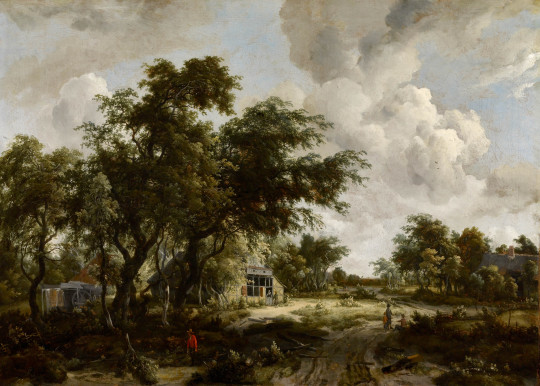
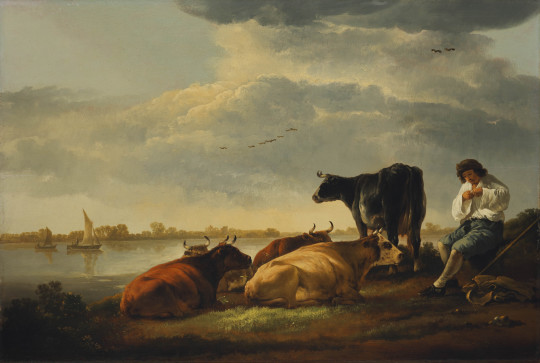
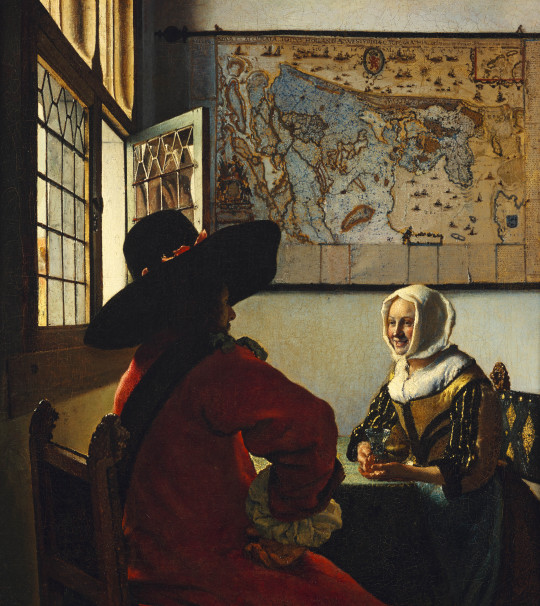

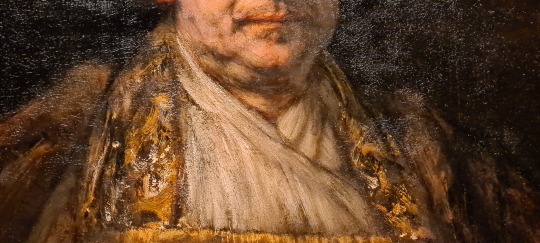
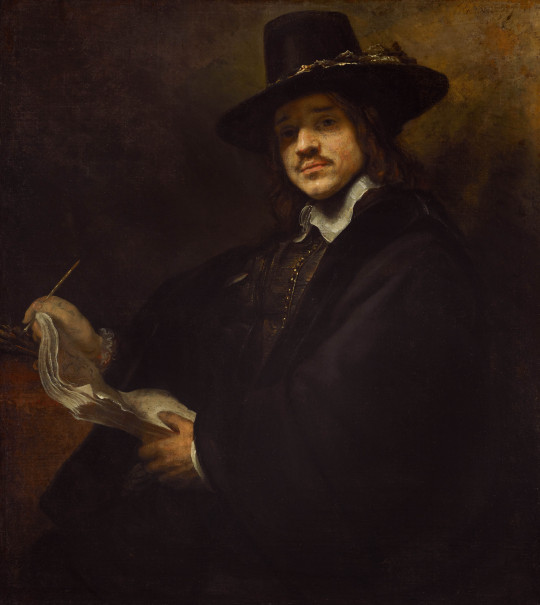



Wat? Landschap met een voetbrug door Jacob van Ruisdael (1652), Landschap met watermolen van Meindert Hobbema (ca. 1665), Rivierlandschap met herder en koeien door Aelbert Cuyp (Ca. 1650-1660), Soldaat en lachende vrouw door Johannes Vermeer (ca. 1657), Zelfportret (1658) (met detail) en Portret van een jonge kunstenaar (ca. 1650-1660) door Rembrandt van Rijn en Portret van een man (met details) door Frans Hals (ca. 1660)
Waar? Tentoonstelling Manhattan Masters – Hollandse schilderijen uit The Frick Collection in het Mauritshuis, ’s-Gravenhage
Wanneer? 24 november 2022
Aan de rand van Central Park in New York staat de villa waarin The Frick Collection is gevestigd. Het museum huisvest de verzameling van ondernemer en kunstverzamelaar Henry Clay Frick met wat daar later aan is toegevoegd. Nu dit museum wordt gerenoveerd, leent het tien topstukken van Nederlandse meesters uit aan het Mauritshuis in Den Haag.
Een tentoonstelling van slechts tien werken klinkt niet veelbelovend, maar kwantiteit is niet alles en in dit geval geldt het Bauhaus-motto ‘Less is more’ meer dan ooit. De kwaliteit van de tentoongestelde werken is fantastisch en het is heerlijk om je aandacht slechts over een beperkt aantal doeken te hoeven verdelen.
Jacob van Ruisdael is natuurlijk vooral beroemd vanwege zijn luchten. Nu moet ik bekennen dat ik van de meeste werken van deze schilder een beetje somber wordt. Maar niet van het werk dat hier hangt: Landschap met een voetbrug. Het werk vertoont veel diepte en de kleuren zijn zo intens alsof het werk gisteren is geschilderd. Het werk is ongetwijfeld recent gerestaureerd of ten minste schoongemaakt. We zien een heuvelachtig landschap. Links zit een heer te paard, terwijl een tweede paard door een knecht bij het leidsel wordt vastgehouden. De berijder van dit tweede dier is afgestapt en sluipt met het geweer in de aanslag de helling op naar de loopbrug. Zijn doelwit is waarschijnlijk het paar eenden dat op de rivier dobbert. Aan het water zit een hengelaar. Hij heeft zijn hoofd gedraaid naar de paarden. Werd hij bij het hengelen gestoord of is het nieuwsgierigheid die zijn aandacht afleidt van waar hij mee bezig is? In de verte op een heuvel zien we een kerk en een molen, wat erop duidt dat zich daar een dorp bevindt. Natuurlijk is de wolkenlucht fraai geschilderd, zoals je van Ruisdael mag verwachten, maar dat geldt zeker ook voor de bomen. Vooral de oude boom links, die zijn wortels in de, zo te zien rotsachtige, bodem heeft begraven is geweldig weergegeven. Het licht speelt door het gebladerte en zorgt voor een prachtige gloed. Als ik na de tentoonstelling thuis de catalogus opensla, zie ik op de reproductie weinig terug van wat dit doek in realiteit zo onweerstaanbaar maakt. Dat toont maar weer eens aan dat niets op kan tegen ‘het echte werk’.
Een ander landschap is van de hand van Ruisdaels leerling Meindert Hobbema, een schilder die ik beter ken van de Amsterdamse kade dan van zijn schilderijen. Ook dit werk is van een verbluffende kwaliteit. Net als het schilderij van Ruisdael lijkt het zo uit het restauratieatelier afkomstig. Het shirt van de man links vooraan is helderrood en ook het geel van het huisje is sprankelend. Aan de deur van het huisje is een man, leunend op een stok, in gesprek met iemand die binnen staat. Is de man buiten een bedelaar? Dat lijkt zeker het geval te zijn bij de man die rechts van het pad zit. Hij strekt zijn hand uit naar een man en een jongen die tegenover hem staan. Net als bij het landschap van Ruisdael zijn de bomen ook in dit schilderij heel mooi weergegeven.
Van Aelbert Cuyp zien we een rivierlandschap. Een herder frummelt wat aan zijn hemd, terwijl vier van zijn koeien rustig aan de oever van een rivier liggen. Een vijfde koe staat en lijkt te kijken naar de zeilboten op het water. Zowel het tafereel als het gouden licht zijn typerend voor de Dordtse schilder. Een half jaar geleden bezocht ik de tentoonstelling In het licht van Cuyp in het Dordrechts museum. Deze expositie ging uitgebreid in op het werk van deze schilder en de invloed die hij had op andere, met name Engelse, kunstenaars.
Het eerste dat mijn aandacht trekt op Johannes Vermeers Soldaat en lachende vrouw is de landkaart van Nederland. Naar onze begrippen hangt de kaart op zijn kant, het westen naar boven. Ik zie dat mijn geboorte-eiland Walcheren hier nog echt een eiland is. Een ander interessant detail is het glas-in-loodraam. Dit zorgt voor een warme gloed, met name op het gezicht en de hoofddoek van de vrouw. Dit werk is een goede smaakmaker voor de grote Vermeer-tentoonstelling die volgend jaar in het Rijksmuseum zal plaatsvinden. In 1996 bezocht ik hier in het Mauritshuis de laatste grote Vermeer-expositie. Een ware blockbuster!
Het absolute pièce de résistance van deze tentoonstelling is het zelfportret van Rembrandt uit 1658. Tijdens zijn leven schilderde de kunstenaar zo’n tachtig zelfportretten, waarvan dit het grootste is. Rembrandt vereeuwigde zichzelf levensgroot in zestiende-eeuwse kledij, zittend in een leunstoel. De verfstreken zijn gedurfd, hier en daar haast wild, op het doek gezet. Kijk naar de band van de paltrok om Rembrandts nek! Maar het meest indrukwekkend aan dit portret is het doorleefde gezicht met de ogen die mij als beschouwer strak aankijken. Rembrandt voelt in dit schilderij niet als een kunstenaar uit een ver verleden, maar veeleer als een oudere vriend of een wijze oom.
Aan de wand links van dit magistrale werk hangt een werk van een navolger van Rembrandt. Wat een tegenstelling tussen de twee schilderijen! Hier zien we een jonge kunstenaar vol zelfvertrouwen. Zijn blik is zelfverzekerd. Het leven ligt nog grotendeels voor hem. Rembrandt heeft net een faillissement achter de rug, waarbij hij zijn huis (nu het Rembrandthuis) moest verkopen. Het leven heeft zijn sporen nagelaten in het gelaat van de kunstenaar.
Schreef ik dat Rembrandts verfstreken wild waren? Kijk dan ook eens naar het Portret van een man van Frans Hals. Hier is haast sprake van impressionisme avant la lettre. Het witte hemd is met woeste streken neergezet en de handschoenen, die de man in zijn hand houdt, zijn feitelijk niet meer dan een paar vegen verf.
10 notes
·
View notes
Text
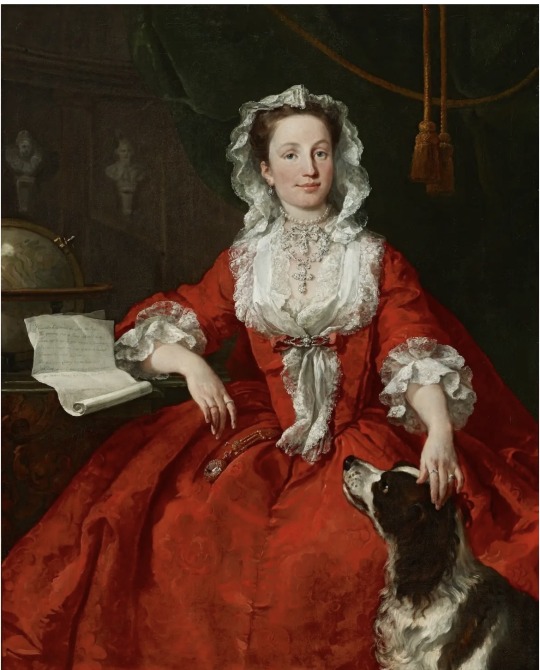
William Hogarth, 'Miss Mary Edwards,' 1742. Oil on canvas, 49 3/4 × 39 7/8 in. (126.4 × 101.3 cm). Henry Clay Frick Bequest. The Frick Collection, New York.
“Mary Edwards (1705–43), one of the richest women of her time, repudiated her marriage to an extravagant husband, although this was tantamount to declaring her son illegitimate. She was Hogarth’s friend and arguably his most significant patron during the decade 1733–43. The monumental portrait of Miss Edwards, wearing magnificent jewels and a striking red dress, is a masterpiece in the series of Hogarth’s commanding middle-class portraits, which includes the famous Captain Coram. The open scroll prominently displayed beside the subject champions the virtues of liberty and property that she would have appreciated as manager of a great fortune.”
https://collections.frick.org/objects/207?utm_source=youtube.com&utm_medium=referral&utm_campaign=yt_whatsherstory_description
Source: Art in The Frick Collection: Paintings, Sculpture, Decorative Arts, New York: Harry N. Abrams, 1996.
6 notes
·
View notes
Note
ok you said you want people to share history stuff with you, and i was researching for a fic and found a bunch of information that i won’t end up using, so here it is:
there was a flood in johnstown pennsylvania in 1889, because the dam broke after a lot of rain. thousands of people died and there was like 500 million dollars (in todays money) in damages. the aftermath of the flood was one of the first times the red cross was really utilized after it’s creation. also liability laws were changed because of this flood :) and there’s a tourist attraction for it that you can visit.
the more you know.
I did a little research because somehow I had never heard of this before?? I’m absolutely fascinated thank you so much for sharing this.
Okay so the dam was owned by a VERY elite fishing/hunting club. Andrew Carnegie, Henry Clay Frick, and a few other big-name steel/railroad barons were members of the club, and having as much money as they did, they basically owned it and made all of the decisions. When they bought the dam, they “modified it to their recreational interests,” which means they lowered it by three feet so they could fish, which was later determined to be the cause of the failure in 1889.
The flood was “as wide as the Mississippi River and three times more powerful than Niagara Falls” which is absolutely insane to me. Also, according to this article it was nearly $4.5 BILLION in damages in todays money. Holy fuck.
This is dark, so just a warning for flood-related death: “bodies were found as far away as Cincinnati, Ohio—more than 400 miles away.” UM??!!!? 400 MILES IS A SEVEN HOUR DRIVE.
Clara Barton herself (founder and president of the Red Cross) stayed in Johnstown for five months and when she left, the people gave her “a gold pin and a locket, set in diamonds and amethysts, as a farewell present,” which is just a very sweet detail that I liked.
There’s lots of photography from the flood, and I encourage people to look it up, it’s breathtaking. The destruction is literally unfathomable. This image stood out to me though.
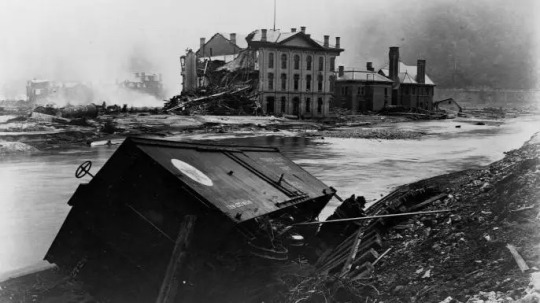
The rail car, tilted off the mangled tracks, with the debris of the town behind it, is a really beautiful representation of the event, knowing that it was caused by careless, leisure-seeking railroad barons (who were not held legally responsible for this flood at all. Like you said, liability laws were shit and this case was very instrumental in fixing that).
What’s even more interesting is that the flood happened in the middle of a really nasty labor war in the American Northeast in which the working class realized that the upper class did not value workers’/the working class’ wellbeing at all. I can imagine news of the flood would serve to fuel that growing anger, which led to numerous successful workers rights movements in the 1890s-1910s.
Anyways thank you so much Mary. I can’t believe I didn’t know about this, I feel like it’s an important piece of the American historical narrative.
(here are my sources, please if anyone knows more about this or if I got anything wrong, lmk)
#mary tag#history asks#what on earth were you writing that this was relevant information?? i love that sm#shit this post ended up being really long sorry
7 notes
·
View notes
Photo




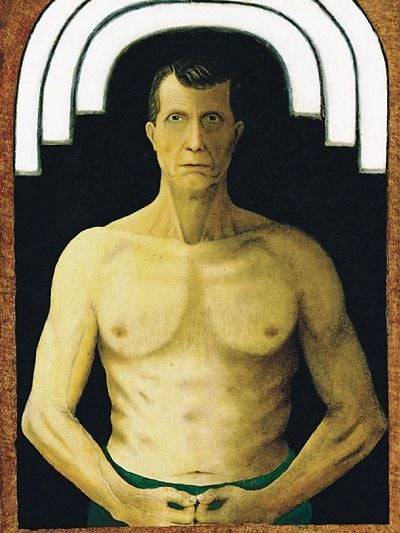

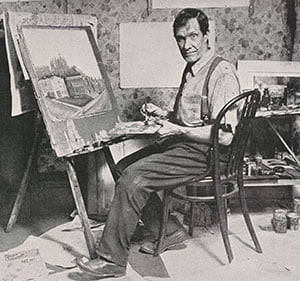
John Kane (1860 — 1934) was an American self-taught painter.
He was born John Cain to Irish parents in West Calder, Scotland on August 19, 1860. His father died when he was age 10, leaving behind a widow and 7 children. His father was employed as a grave digger in West Calder, it is said that he dug a grave on Friday and filled it on Monday. The young Kane quit school to work in the shale mines. He actually worked at Youngs Paraffin works and was so struck with the malleability of the hot paraffin moulds that he made a mask of his own face for his mother Biddy. Naturally he burned his face, but not too seriously.
After his mother remarried, he emigrated to the United States at age 19, following his stepfather and older brother Patrick.He first worked for the Baltimore & Ohio Railroad at McKeesport as a gandy dancer, one who stamps down stones between the railroad ties. Next he worked a stint in the steel industry at the National Tube Company in McKeesport, but soon left for a job in Connellsville, Pennsylvania at the coke ovens of Henry Clay Frick.
https://en.wikipedia.org/wiki/John_Kane_(artist)
7 notes
·
View notes